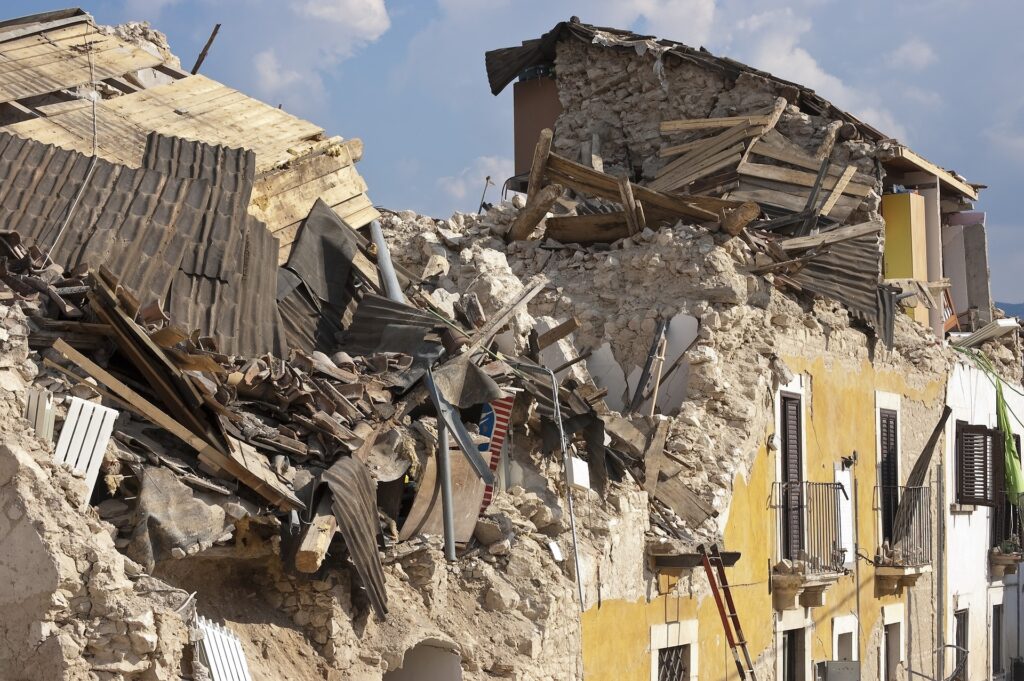

The US Small Business Administration (SBA) oversees various loan packages called SBA loans. While most loans are for business growth and development, SBA disaster loans are explicitly for businesses facing economic hardship due to a natural disaster.

You might be eligible for relief from the SBA if your business was impacted by a natural disaster such as a tornado, hurricane, or other adverse weather events. In this guide, we’ll cover everything you need to know about the program, including who’s eligible and how to apply.
Specifically, we’ll answer these questions and more:
SBA disaster loans provide funding to small businesses that have suffered economic impact due to a state of emergency. The loan program offers up to $2 million for eligible small businesses.
The US Small Business Administration’s disaster loan program helps communities affected by natural disasters such as tornadoes or hurricanes. The main loan for small business owners is the Economic Injury Disaster Loan (EIDL).
In addition to disaster assistance for small businesses, the SBA provides physical damage loans for homeowners, renters, and property damage to the business. Business owners who reside in a disaster area can receive both an EIDL loan and a physical damage loan, provided the combined loans don’t exceed $2 million.
Eligible businesses apply for EIDLs and physical damage loans directly through the SBA. As previously stated, the maximum loan amount is $2 million.
Businesses can use Economic Injury Disaster Loans for:
Physical damage loans provide funds for repairs not covered by insurance. Small business owners can use the funds to repair or replace the following:
Terms for both EIDL and physical damage loans go up to 30 years and are determined by the organization’s ability to repay the loan. Loan repayments are deferred for the first 12 months, so businesses have up to a year to get businesses back up and running before repayments begin.
Interest loans cannot exceed 4% for EIDLs. For physical damage loans, the interest rates are:
There are no prepayment penalties; the only other fee is a $100 processing fee for loans over $25,000.
Eligible businesses include:
To qualify, your business must be in a declared disaster area. The SBA provides a convenient tool to check for disaster declarations in your area.
Your business must also have suffered substantial economic injury, meaning you cannot meet your normal financial obligations or pay required operating expenses. The loan amount you receive is based on the extent of the economic injury and your business’s financial needs.
The SBA only approves EIDLs when it determines the company couldn’t obtain credit elsewhere.
SBA disaster loans are the only loan packages in the program where you apply directly to the Small Business Administration.
The steps to apply are as follows:
Step 2: Apply online, which involves creating an online account.
Step 3: Check your status through your online account.
You may also be required to complete IRS Form 4506-T with your loan application. The form gives the SBA permission to access tax information about your company.
The primary advantage of the SBA disaster loan program is that it provides financial assistance when your business cannot meet its obligations due to a natural disaster. Since the program is intended to help your business bounce back, you don’t have to begin repaying the loan for 12 months.
In addition, the interest rates on these loans are quite low, falling under 4% in most cases. The loans also come with long repayment terms, up to 30 years, making repayment very management.
The obvious disadvantage is that you can only get this loan if your business is negatively affected by a natural disaster. No one wants to be in that situation, but the loan program helps alleviate the financial hardship when a disaster occurs.
Pros:
Cons:
Here are the most common questions about SBA disaster loans.
No collateral is required for loans under $25,000. Real estate is the preferred collateral for loans over $25,000. Business owners do not need to use their primary residence as collateral for loans under $200,000 if the SBA determines the owner has other assets of equal value.
Loans over $200,000 also require a personal guarantee. In addition, the SBA may file a UCC lien on business assets.
The SBA discontinued the Covid-19 EIDL program. It stopped accepting new applications in January 2022 and stopped taking increase requests in May 2022.
However, some enhancements to the program enacted under the CARES Act remain. For example, the maximum borrowing amount is still $2 million, a Covid-related increase.
No, loan forgiveness is not available for SBA disaster loans.
There are plenty of small business loan options if you’re not specifically seeking economic relief from a natural disaster.
Outside of the SBA loan program, you could consider the following:
This niche subset of SBA loans is only available to businesses and private non-profit organizations in a declared disaster area. While no company wants to face this situation, the SBA loan program could provide much-needed relief to keep your business afloat.
The extended repayment terms, low interest rates, and deferred payments combine for a manageable financing solution when faced with this type of adversity. Contact us or visit the SBA if you need more guidance on the program. Our loan executives can also answer any questions about other small business loans.